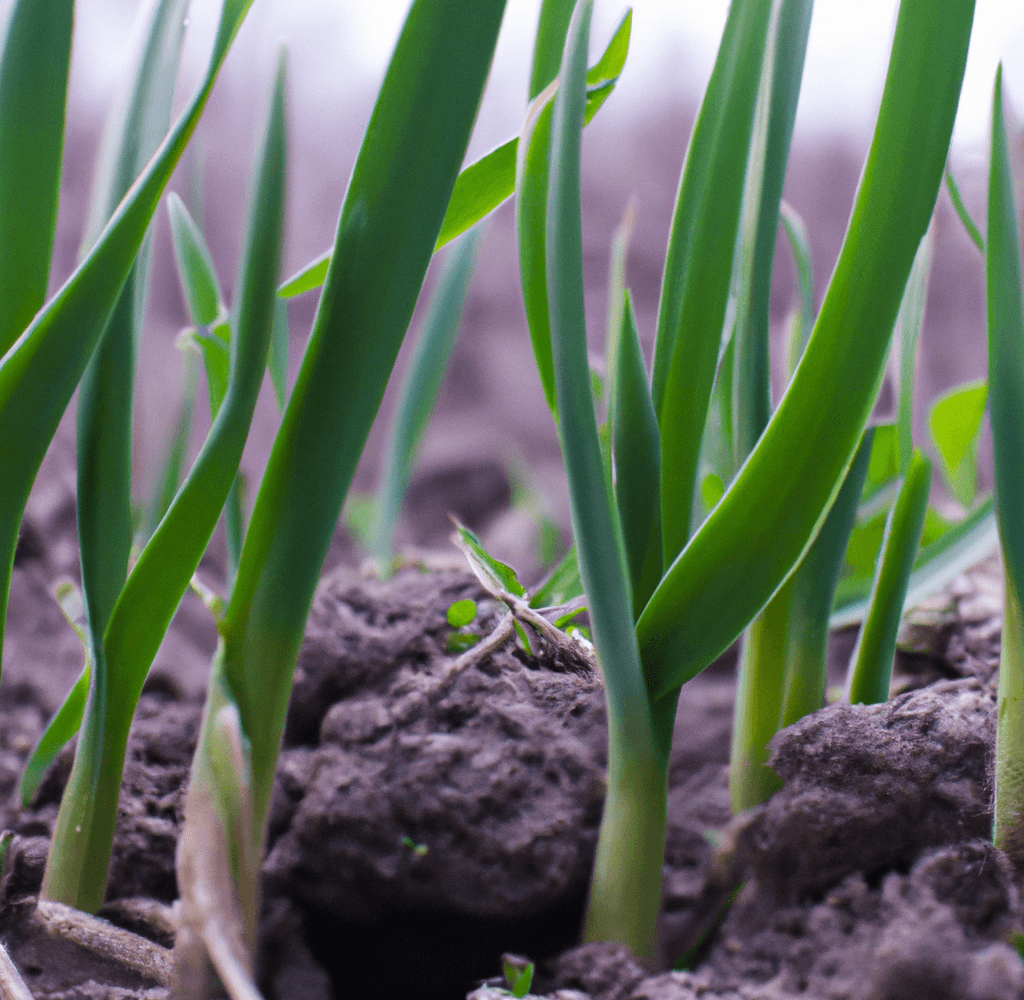Good Matches and Bad Companion Plants for Garlic
Companion planting garlic is one of the simplest ways to make your garden healthier and more productive. Garlic (Allium sativum) isn’t just a flavorful kitchen essential—it’s also a powerful ally in vegetable gardening. With its natural pest repellent properties, garlic helps protect nearby plants, improve soil health, and support a more balanced garden ecosystem.
In this guide, we’ll explore the best garlic companion plants, which crops to avoid, and practical tips for creating a harmonious garden bed that enhances garlic growth while helping your other plants thrive.
To dive deeper into growing garlic successfully, visit our Garlic Resource Center and try the Garlic Selector Tool for personalized variety recommendations based on your region and growing style.

What Is Companion Planting?
Companion planting is the practice of growing different plants together to enhance growth, deter pests, and attract beneficial insects. Certain plants support each other through their root systems, scents, or nutrient exchange—a symbiotic relationship that benefits the entire garden.
When it comes to companion gardening garlic, the benefits are clear: garlic’s strong aroma deters pests, its antifungal compounds help reduce pests and diseases, and its compact growth makes it easy to plant with garlic near other crops without crowding the bed.
Why Garlic Makes an Excellent Companion Plant
Garlic is one of the best plants for garlic companion setups because it brings multiple benefits to the garden:
- Natural pest control: Garlic repels common pests like aphids, spider mites, cabbage worms, and Japanese beetles.
- Disease prevention: Its antifungal properties help prevent mildew and fungal infections.
- Improved soil health: Garlic releases sulfur compounds that enhance nutrient uptake for neighboring crops.
- Efficient use of space: Garlic’s small footprint allows you to interplant it easily in your garden bed.
For detailed guidance on how to grow garlic, see our article on Garlic Growing Tips for Beginners.

Best Companion Plants for Garlic
Not all plants thrive equally near garlic, but several make excellent companions for garlic. Here are some of the best:
Tomatoes
Tomatoes benefit greatly when garlic planted nearby helps deter pests such as spider mites and aphids. The sulfur compounds in garlic also help prevent fungal diseases. For a full guide on tomato care, read How to Grow Tomatoes: A Growing Guide.
Carrots
Carrots and garlic form a great pair. Garlic wards off carrot root flies, while carrots help loosen the soil around garlic bulbs, improving bulb development. Learn more in our How to Grow Carrots Guide.
Brassicas (Cabbage, Broccoli, Kale)
Members of the cabbage family thrive with companion planting garlic. Garlic repels cabbage loopers, aphids, and other pests that attack brassicas. Discover tips for growing brassicas in our Cabbage Growing Guide.
Peppers
Planting garlic with peppers helps keep aphids and spider mites away. Garlic’s natural pest repellent properties also reduce the need for chemical sprays.
Roses
Roses and garlic make an unlikely but effective duo. Garlic planted near roses helps prevent aphids and black spot, keeping blooms healthy and vibrant.
Fruit Trees
When you plant garlic near fruit trees, it helps deter pests like borers and aphids while minimizing fungal diseases. Learn more about caring for trees in When and How to Fertilize Your Fruit Trees.

Bad Companion Plants for Garlic
While garlic supports many crops, there are also bad companion plants for garlic that you should avoid. Some species compete for nutrients or even release chemicals that stunt the growth of nearby garlic.
- Legumes (Beans and Peas): Garlic can interfere with nitrogen fixation, slowing the growth of beans and peas.
- Asparagus: Garlic may stunt the growth of asparagus when planted nearby.
- Sage: These two herbs compete for nutrients, leading to weaker plants overall.
Keeping these crops separate helps maintain balance and prevents competition in your garden bed.

Tips for Planting Garlic with Companion Plants
Timing
Most gardeners plant garlic in the fall, allowing it to develop strong roots before winter. Choose companions that can overwinter, like kale, or spring crops that won’t disturb developing bulbs.
Spacing
Plant garlic cloves about 6 inches apart, with 12 inches between rows. Provide adequate spacing for companions so they don’t compete for nutrients or sunlight.
Soil and Mulch
Garlic thrives in well-drained, nutrient-rich soil. Amending with compost promotes a symbiotic relationship between garlic and its neighbors. Adding mulch keeps soil moist and suppresses weeds.
Watering
Keep the soil evenly moist but not waterlogged. Overwatering can cause rot in garlic bulbs and surrounding crops.
Rotation
Rotate crops yearly to avoid pests and diseases building up in the soil. Avoid planting garlic or other alliums in the same spot for at least three years.
For advanced techniques to maximize garlic yield, check out Maximizing Garlic Yield: Advanced Techniques for Experienced Gardeners.

Organic Practices for Companion Gardening Garlic
- Use organic fertilizers like compost or fish emulsion to support both garlic and companion crops. Learn more in our Organic Garlic Farming Tips.
- Encourage beneficial insects by planting flowers like dill or yarrow nearby.
- Hand-weed regularly and use mulch to maintain moisture and suppress weeds.
- Use cover crops such as clover or vetch to improve soil structure and fertility between growing seasons.
For harvest guidance, see Harvesting Garlic: Best Techniques for Organic Gardeners, or browse our selection of Seed Garlic for Sale.
In Summary
Companion planting garlic is an easy and effective way to promote plant health, reduce chemical use, and create a harmonious organic garden. From deterring pests to enhancing soil nutrients, garlic is a powerhouse companion for many crops.
Choose your garlic companions wisely, avoid incompatible neighbors, and nurture a thriving vegetable gardening ecosystem built on balance and cooperation.
For more guidance, explore our Garlic Resource Center and shop for high-quality Seed Garlic to start your next successful growing season.

